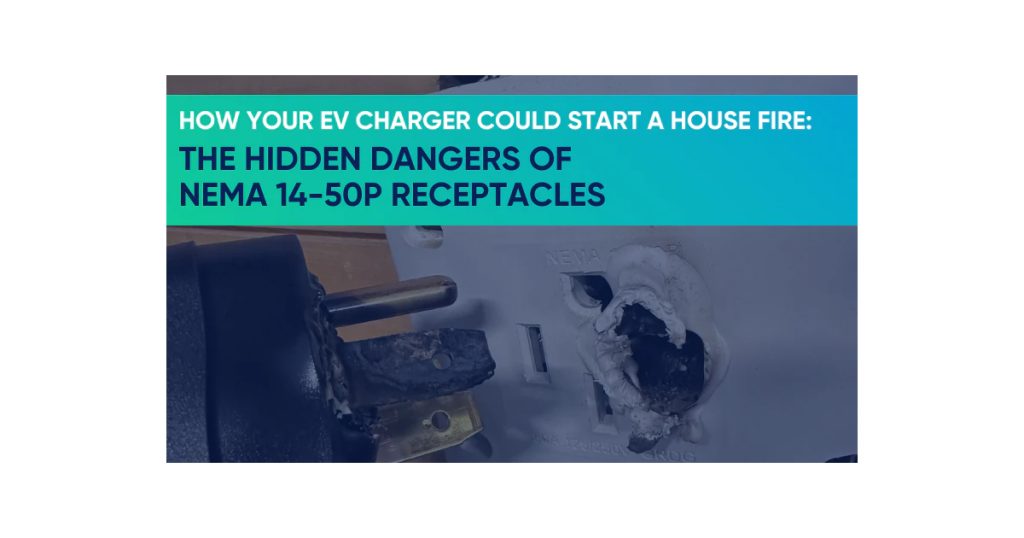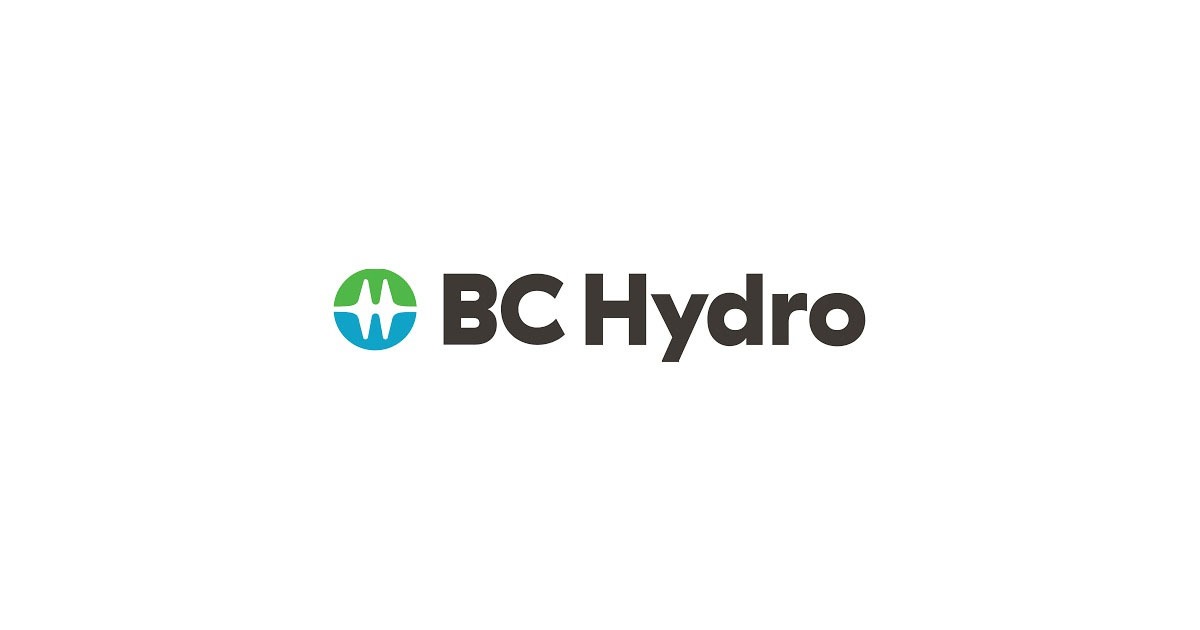How Your EV Charger Could Start a House Fire: The Hidden Dangers of NEMA 14-50P Receptacles

September 17, 2024
Electric vehicles (EVs) are rapidly becoming a mainstay in households across North America, celebrated for their eco-friendliness and efficiency. However, as more EVs hit the road, a concerning issue has emerged: the potential for house fires caused by charging these vehicles using standard NEMA 14-50P receptacles at 40 amps. In this post, we delve into the risks associated with using these receptacles, explore real-life experiences from EV owners and electricians, and offer practical advice to ensure your EV charging setup is as safe as it is convenient.
THE PROBLEM WITH NEMA 14-50P RECEPTACLES
The NEMA 14-50P receptacle is a common choice for Level 2 EV charging, offering a convenient plug-in option for many drivers. However, several inherent risks make this solution potentially dangerous:
Poor contact quality:
Loose Connections: Over time, the screws holding wires in place can loosen, creating high-resistance points. When a high current flows through these points, the result is excessive heat generation, which can lead to melting or fire.
Worn or Corroded Contacts: Daily use can cause wear and tear on contacts, reducing conductivity and increasing resistance. Corrosion further exacerbates this issue, increasing the risk of overheating.
Lack of temperature monitoring:
No Temperature Sensors: Standard NEMA 14-50P outlets do not include integrated temperature sensors that could halt charging if overheating is detected. Without this safeguard, excessive heat buildup may go unnoticed until it’s too late.
High current draw:
40A Load Stress: Drawing a continuous 40 amps through a household receptacle is pushing the limits of many NEMA 14-50P installations. This high demand can lead to overheating, especially if installation or maintenance practices are inadequate.
Product-specific vulnerabilities:
Brand Variability: While Leviton outlets are often mentioned in user experiences due to their popularity, the issue is not exclusive to any single brand. However, their widespread use might lead to more frequent reports of problems.
REAL-LIFE EXPERIENCES FROM THE FIELD

Several Reddit threads (including Randall Cobb‘s story) and news articles (like Jay Becraft‘s story) have captured the collective experiences of EV owners and electricians who have faced common issues with NEMA 14-50P receptacles:
Installation Quality Matters:
Many problems stem from improper installation, such as insufficiently tightened screws or poor wire connections.
Material and Build Quality Matters:
Users noted that some receptacles are more durable than others, with material quality significantly affecting performance.
Unintended Overload:
Users also found that their home’s electrical infrastructure often wasn’t prepared for the continuous high load required by 40A EV charging.
RECOMMENDATIONS FOR SAFE EV CHARGING
To mitigate the risks associated with using a NEMA 14-50P receptacle for EV charging, consider the following recommendations:
Opt for Hardwired Connections
Avoid Plugged Connections: Whenever possible, choose a hardwired installation rather than using a plug for 40A connections. This reduces the potential for poor contact and overheating.
Install Disconnect Switches: Provide a disconnect switch near the charger for safety and ease of servicing.
Select EV-Grade Receptacles
Use Rated Equipment: If you must use a plug, ensure that the NEMA 14-50P receptacle is specifically rated for EV charging, as these are designed to withstand higher continuous loads.
Derate the Charging Current to 32A
Limit to 32A: Take a cue from Tesla and other manufacturers who limit charging current to 32 amps when using a plug. This small reduction significantly decreases the risk of overheating without affecting the practicality of overnight charging.
Use Dielectric Grease
Enhance Connection Quality: Applying dielectric grease on the back of the receptacle can help reduce arcing and improve conductivity, potentially extending the life of the connection.
Perform Regular Maintenance
Check Torque and Connections: Regularly inspect and retighten the screw terminals. Periodic maintenance helps prevent failures due to loosened connections and wear.
CONCLUSION
While using a NEMA 14-50P receptacle for EV charging is convenient, it carries risks that can be mitigated through careful selection of equipment, proper installation practices, and regular maintenance. By following these guidelines, homeowners and electricians can enhance the safety and reliability of home EV charging setups, ensuring peace of mind alongside environmental benefits.




